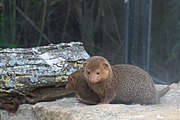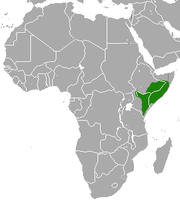
The meerkat or suricate is a small mongoose found in southern Africa. It is characterised by a broad head, large eyes, a pointed snout, long legs, a thin tapering tail, and a brindled coat pattern. The head-and-body length is around 24–35 cm (9.4–13.8 in), and the weight is typically between 0.62 and 0.97 kg. The coat is light grey to yellowish-brown with alternate, poorly-defined light and dark bands on the back. Meerkats have foreclaws adapted for digging and have the ability to thermoregulate to survive in their harsh, dry habitat. Three subspecies are recognised.
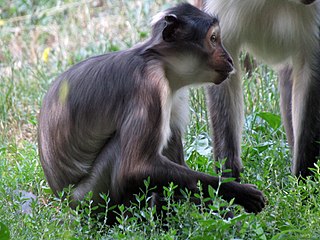
The white-eyelid mangabeys are African Old World monkeys belonging to the genus Cercocebus. They are characterized by their bare upper eyelids, which are lighter than their facial skin colouring, and the uniformly coloured hairs of the fur. The other two genera of mangabeys, Lophocebus and Rungwecebus, were once thought to be very closely related to Cercocebus, so much so that all the species were placed in one genus, but Lophocebus and Rungwecebus species are now understood to be more closely related to the baboons in genus Papio, while the Cercocebus species are more closely related to the mandrill.

Anomalurus is the largest genus in the rodent family Anomaluridae, with four species. It is the only genus in the subfamily Anomalurinae.
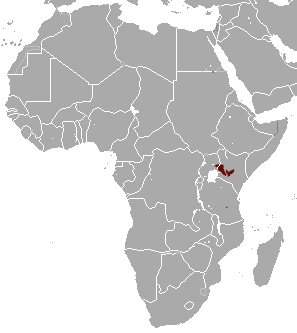
Jackson's mongoose is a mongoose species native to montane forests in Kenya, Uganda and Tanzania. It appears to be rare and has been classified as Near Threatened since 2008.

The Ethiopian dwarf mongoose, also known as the desert dwarf mongoose or Somali dwarf mongoose, is a mongoose native to East Africa, particularly Ethiopia, Kenya, and Somalia.

The common dwarf mongoose is a mongoose species native to Angola, northern Namibia, KwaZulu-Natal in South Africa, Zambia and East Africa. It is part of the genus Helogale, along with the Ethiopian dwarf mongoose.
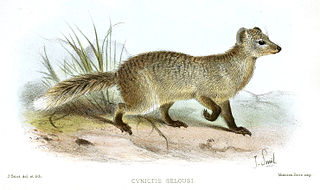
Selous's mongoose is a mongoose species native to Southern Africa. It is the only member of the genus Paracynictis.
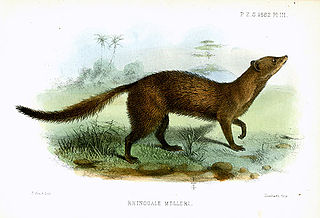
Meller's mongoose is a small brown mongoose native to savannas and woodlands of southeastern Africa. It is the only member of the genus Rhynchogale. The Meller's mongoose lives alone and is active at night, feeding on termites or other small insects and animals. While somewhat rare, it is adaptable and faces no serious threats. It is a member of the mongoose family (Herpestidae), a group of fox-like animals native to Asia, southern Europe, and Africa.

The Pemba flying fox is a species of flying fox in the family Pteropodidae. It is endemic to the island of Pemba on the coast of Tanzania.

Phacochoerus is a genus in the family Suidae, commonly known as warthogs. They are pigs who live in open and semi-open habitats, even in quite arid regions, in sub-Saharan Africa. The two species were formerly considered conspecific under the scientific name Phacochoerus aethiopicus, but today this is limited to the desert warthog, while the best-known and most widespread species, the common warthog, is Phacochoerus africanus.

The Somalian slender mongoose is a small mammal found in Somalia and adjacent regions. It is a small to medium-sized carnivoran, averaging about 0.6 kg (1.3 lb) in weight.

Olwen Anne Elisabeth Rasa was a British ethologist, known for her long-duration study of the social behaviour of the dwarf mongoose in Kenya. She had studied aggression among coral reef fish under the pioneering ethologist Konrad Lorenz. Her fieldwork in Kenya's Taru Desert led to a book, Mongoose Watch: A Family Observed, and to a popular German television series, Expedition ins Tierreich. She later studied social behaviour in the yellow mongoose and the sub-social tenebrionid beetle Parastizopus armaticeps.

The squirrel galagos are a group of four species of strepsirrhine primates. They are classified in the genus Sciurocheirus of the family Galagidae.


